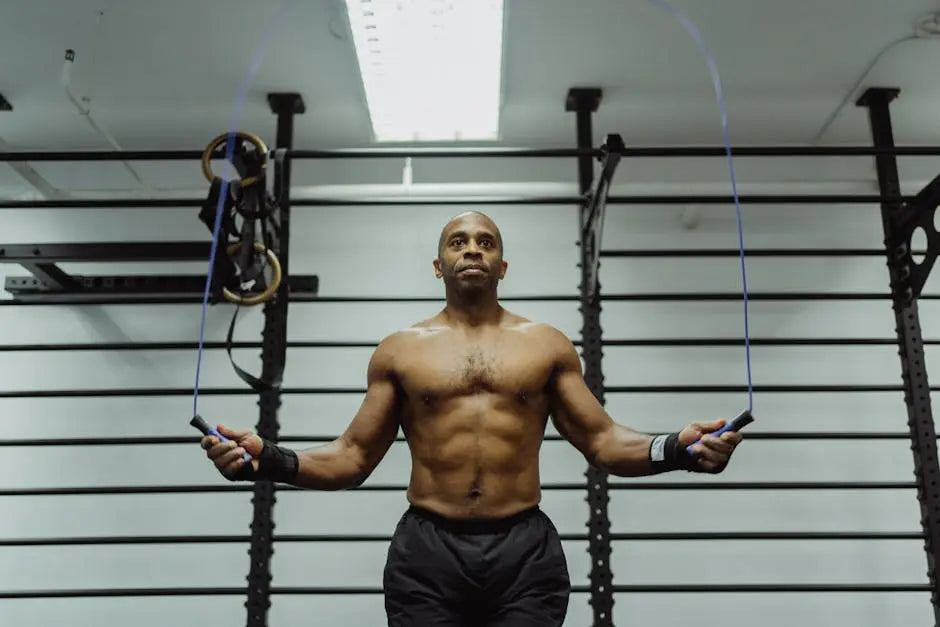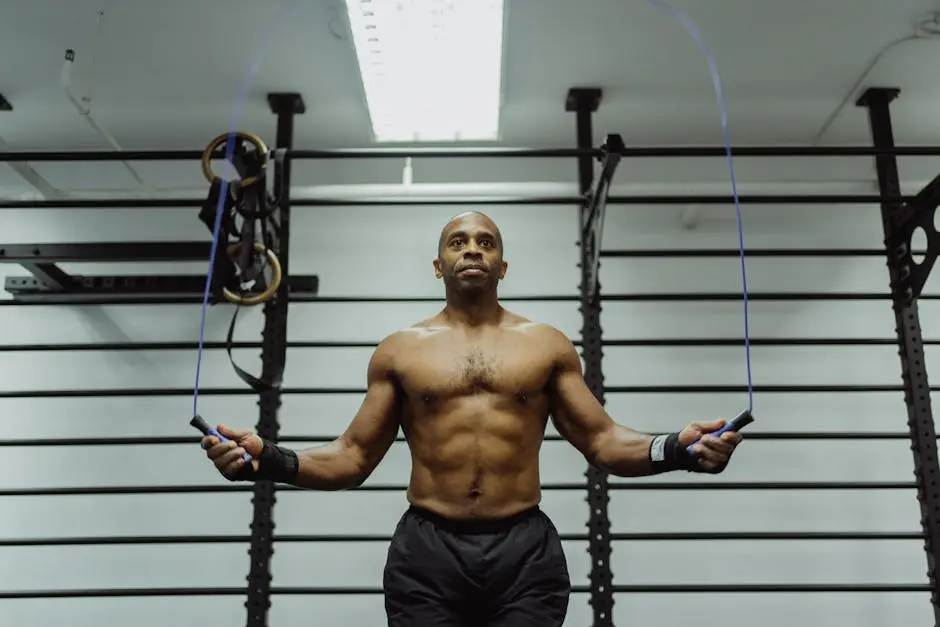
7 Essential Jump Rope Techniques Every Beginner Must Learn
Share
Jumping rope isn’t just child’s play. It’s a fantastic cardiovascular workout that boosts endurance, improves coordination, and burns plenty of calories. Whether you’re new to jumping rope or looking to refine your skills, mastering certain techniques will make your workouts more effective and enjoyable. Let’s explore some foundational jump rope techniques every beginner should learn.
1. Basic Bounce to Get Started
The basic bounce is the quintessential starting point for mastering jump rope. When performing this technique, aim to maintain a rhythm that allows you to stay light on your feet. Keep your shoulders relaxed and use your wrists to turn the rope rather than your entire arms. This fundamental technique not only aids in improving your balance and coordination but also sets the groundwork for more advanced moves. As you become more comfortable with the basic bounce, it’s crucial to remember discipline is freedom. Building this routine ensures you form a foundation that’s both strong and flexible, allowing for gradual progression.
Adapting to the basic bounce helps to establish the rhythm necessary for all other jump rope exercises. Initially, practice with short intervals, gradually working up to longer sessions as your stamina improves. This approach not only aids in acclimating your muscles to the new exercise but also reduces the risk of early fatigue or injury.
2. The Efficient Alternate Foot Step
Imagine jogging in place, but with a jump rope rotating around your body; that’s the essence of the alternate foot step. This method acts like a transition, shifting between the basic bounce and more demanding techniques such as the high knees. Efficiency in this step is about ensuring smooth and quick transitions from one foot to the other, ideally letting your body glide over the surface with ease. Consider using beaded ropes as they provide feedback which is crucial for maintaining rhythm and control. This exercise truly engages your cardiovascular system and is perfect for ramping up the intensity of your workouts without stepping too far into advanced territory.
The alternate foot step is favored for its versatility, allowing you to mix up your routine and prevent plateaus in your fitness progress. As you develop proficiency, incorporate variations like speeding up the pace or integrating brief pauses to mimic sprint intervals. These adjustments will enhance both your aerobic and anaerobic conditioning, offering comprehensive fitness benefits.
3. Mastering the High Knees Technique
High knees begin with lifting your knees to waist height as you jump rope, requiring significant core and leg engagement. This technique boosts cardiovascular fitness rapidly while building muscular endurance in your lower body. Begin slowly to monitor your form, ensuring your knees reach an appropriate height before speeding up. The emphasis should be on technique rather than speed at the start, preventing injury and promoting long-term improvement.
To enhance your high knees routine, consider incorporating varying speeds or alternating with other techniques like the side straddle. This not only keeps the workout dynamic but also encourages elements of agility and balance. Increasing the rhythm akin to a sprint session will push your limits, amplifying both strength and endurance gains over time.
4. Side Straddle and Its Benefits
The side straddle jump offers a lateral twist to the traditional jumps by encouraging sideways motion. Start by jumping in and out in a rhythmic pattern, similar to jumping jacks. This exercise promotes agility, challenging different muscle groups and preventing monotony in your workouts. It’s particularly great for balance as it requires coordination between both sides of the body. Agility, or the ability to quickly change direction without losing speed, is a key component of fitness that is often overlooked. By incorporating the side straddle, you introduce a new dimension to your workout routine that enhances these aspects.
Side straddle jumps not only make for a superb cardio workout but also engage your hip and thigh muscles intensely. Regularly practicing this move can lead to an improvement in lower body strength and a decrease in fat due to the combined high-energy expenditure and muscle engagement.
5. The Backward Jump for Coordination
At first glance, backward jumping may appear counterproductive, yet it serves as a remarkable tool for enhancing coordination and spatial awareness. Just like the forward jump, keep your elbows close to your sides and your wrists active, turning the rope backwards while maintaining a steady rhythm. This novelty jump not only makes your session more engaging but also sharpens the mind as it challenges your typical spatial dynamics. Remember, unfamiliar movements push your brain to forge new neural pathways, leading to enhanced mental agility.
Backward jumps are excellent for developing non-dominant coordination since they require the body to adapt to movements opposite to its instinctual patterns. By improving this coordination, you’re likely to see benefits extending into daily activities and various sports. Start slow, and as it becomes more natural, increase both the speed and the time spent on this technique.
6. Criss-Cross for Upper Body Workout
The criss-cross jump elevates your routine by incorporating arm activity, thus involving both the upper and lower body in the workout. Execute this move by crossing your arms in front of you during the jump, effectively engaging your arms and shoulders. This technique enhances upper body strength while also honing coordination skills, making it a comprehensive addition to any jump rope session.
For those looking for an added challenge, try combining the criss-cross action with high knees or double under jumps. Such hybrid exercises amplify the workout intensity, ensuring a well-rounded session that addresses multiple fitness components simultaneously. Additionally, performing these complex combinations will further improve your rhythm and coordination, ultimately translating into better overall athletic performance.
7. Jumping the Double Under
The double under is revered among jump rope enthusiasts for its challenge and efficiency. This technique demands the rope pass twice under your feet for each jump, requiring both speed and precision. Begin by mastering the basic bounce and building adequate endurance before gradually increasing your jump speed. Practice diligently to avoid landing on the rope, and strive for smooth, consistent rotations. Not only does this move maximize caloric burn, but it significantly enhances your agility and explosive power, crucial attributes for advanced fitness pursuits.
Successfully performing double unders involves synchronized wrist and lower limb movements, making it an excellent test of coordination and timing. For an additional test of endurance, attempt to chain multiple double unders together, aiming for increased strings of jumps each session. With time, practice, and the right gym equipment, mastering this technique will result in notable jumps in both your competence and confidence on the jump rope.

